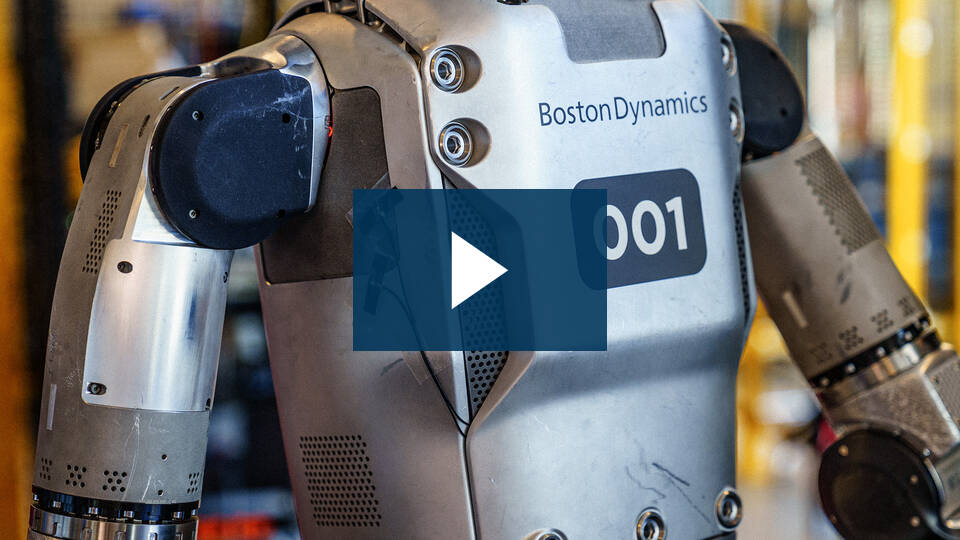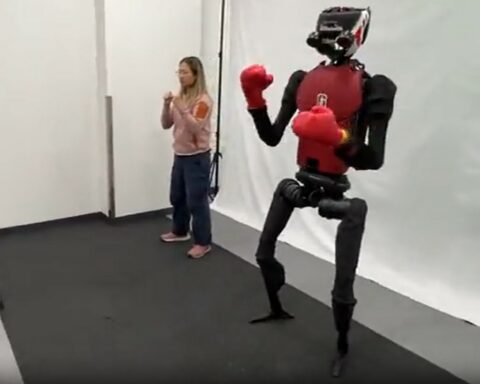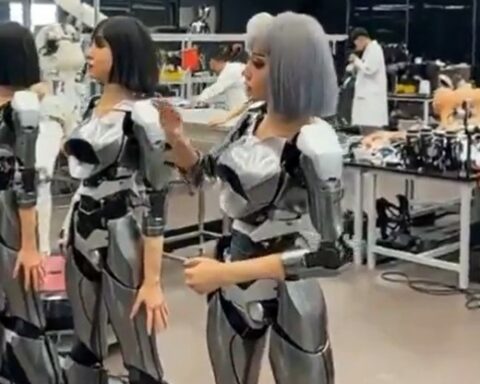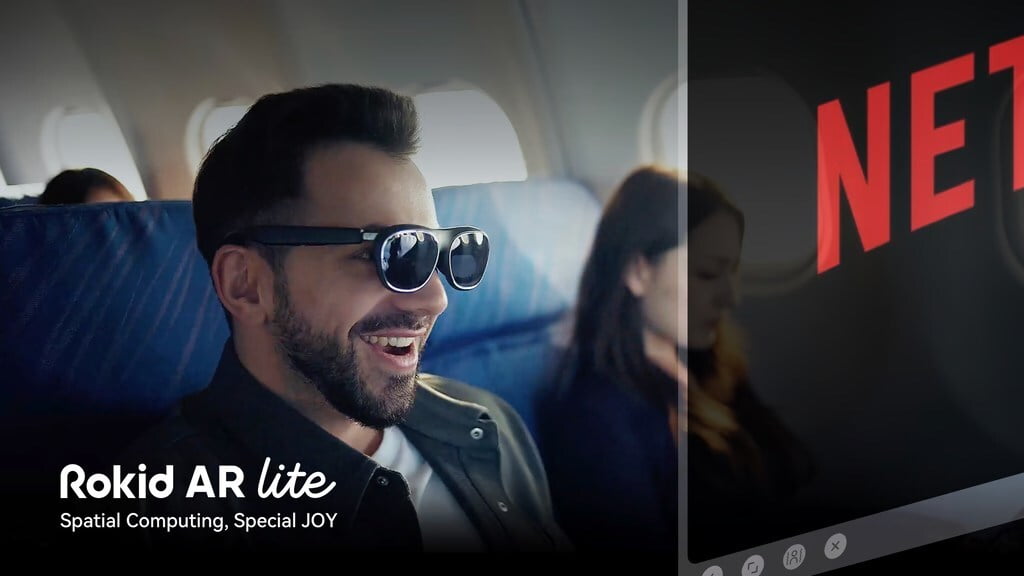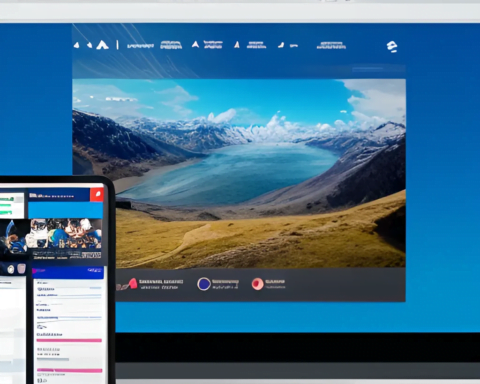Last Updated on May 31, 2024 1:20 pm by Laszlo Szabo / NowadAIs | Published on May 29, 2024 by Laszlo Szabo / NowadAIs
Unitree G1 Robot: A Better Humanoid Robot Than Boston Dynamics Atlas? – Key Notes
- Unitree G1 Robot: A new humanoid robot with exceptional agility and versatility.
- Mobility and Dexterity: Capable of intricate movements and handling delicate tasks.
- Compact Design: Stands at 4’2″, weighs around 100 pounds, and can fold for easy transport.
- Affordable Pricing: Starting at $16,000, making advanced robotics more accessible.
- Comparison with Boston Dynamics Atlas: Highlights differences in mobility, design, and cost.
- Potential Applications: Education, industrial tasks, disaster response, and household assistance.
- Customization Options: Includes modular hardware upgrades and software development kits.
- Simulation Environment: Unitree Sim for testing and validation in a virtual setting.
Introduction
In the rapidly evolving world of robotics, the unveiling of the Unitree G1 has sparked widespread interest and intrigue. This humanoid robot, with its amazing agility and versatility, stands as a testament to the advancements in the field of robotics. Now we delve into the details of the Unitree G1, we’ll uncover its impressive capabilities, explore its similarities and differences with the renowned Boston Dynamics Atlas, and ponder the implications of this new era of hypermobility in humanoid robots.
Unitree G1: A Robotic Marvel
Unitree Introducing | Unitree G1 Humanoid Agent | AI Avatar
Price from $16K 🤩
Unlock unlimited sports potential(Extra large joint movement angle, 23~34 joints)
Force control of dexterous hands, manipulation of all things
Imitation & reinforcement learning driven#Unitree #AI pic.twitter.com/Dv1yGaGpoJ— Unitree (@UnitreeRobotics) May 13, 2024
The Unitree G1 is a captivating humanoid robot that has captured the attention of the robotics community and the general public alike. Designed and developed by the Chinese robot manufacturing company Unitree, this remarkable machine boasts an impressive array of features that challenge the boundaries of what we’ve come to expect from humanoid robots.
Unparalleled Mobility and Dexterity
One of the most striking aspects of the Unitree G1 is its exceptional mobility and dexterity. The robot’s ability to perform intricate movements, such as standing up from a prone position, absorbing physical impacts, and executing delicate tasks like nut cracking and soda bottle opening, showcases its remarkable agility. This level of hypermobility, often seen in skilled human contortionists, sets the Unitree G1 apart from its predecessors.
Compact and Versatile Design
Despite its diminutive stature of just 4’2″ in height, the Unitree G1 packs a powerful punch. The robot’s compact design, weighing in at around 100 pounds, allows for impressive maneuverability and ease of transportation. Its ability to fold into a smaller package further enhances its versatility, making it a practical choice for various applications.
Accessible Pricing and Customization
One of the standout features of the Unitree G1 is its relatively affordable price tag, starting at $16,000. This accessibility opens up the world of humanoid robotics to a wider range of individuals and organizations, fostering greater innovation and experimentation. Additionally, the robot’s customization options, such as the “G1 EDU” variant with enhanced capabilities, cater to the diverse needs of users.
Unitree G1 vs. Boston Dynamics Atlas: A Robotic Showdown
As the Unitree G1 enters the market, it inevitably draws comparisons to the renowned Boston Dynamics Atlas, a long-standing leader in the field of humanoid robotics. While these two robots share some similarities, their unique characteristics and approaches offer a fascinating contrast.
Strength and Mobility Comparison
Both the Unitree G1 and the Boston Dynamics Atlas exhibit impressive levels of strength and mobility, showcasing their ability to navigate complex environments and perform intricate tasks. However, the Unitree G1’s emphasis on hypermobility, with its contortionist-like movements, sets it apart from the more conventional approach of the Atlas.
Design and Capabilities
In terms of design, the Unitree G1 boasts a more compact and streamlined appearance, while the Boston Dynamics Atlas maintains a more traditional humanoid form. Additionally, the Unitree G1’s pricing and customization options make it a more accessible option for a broader range of users, potentially opening up new avenues for experimentation and innovation.
Future Implications
The emergence of the Unitree G1 and its competition with the Boston Dynamics Atlas raises intriguing questions about the future of humanoid robotics. As companies continue to push the boundaries of what’s possible, the public’s perception and acceptance of these advanced machines will play a crucial role in shaping their development and implementation.
Exploring the Unitree G1’s Specifications and Features
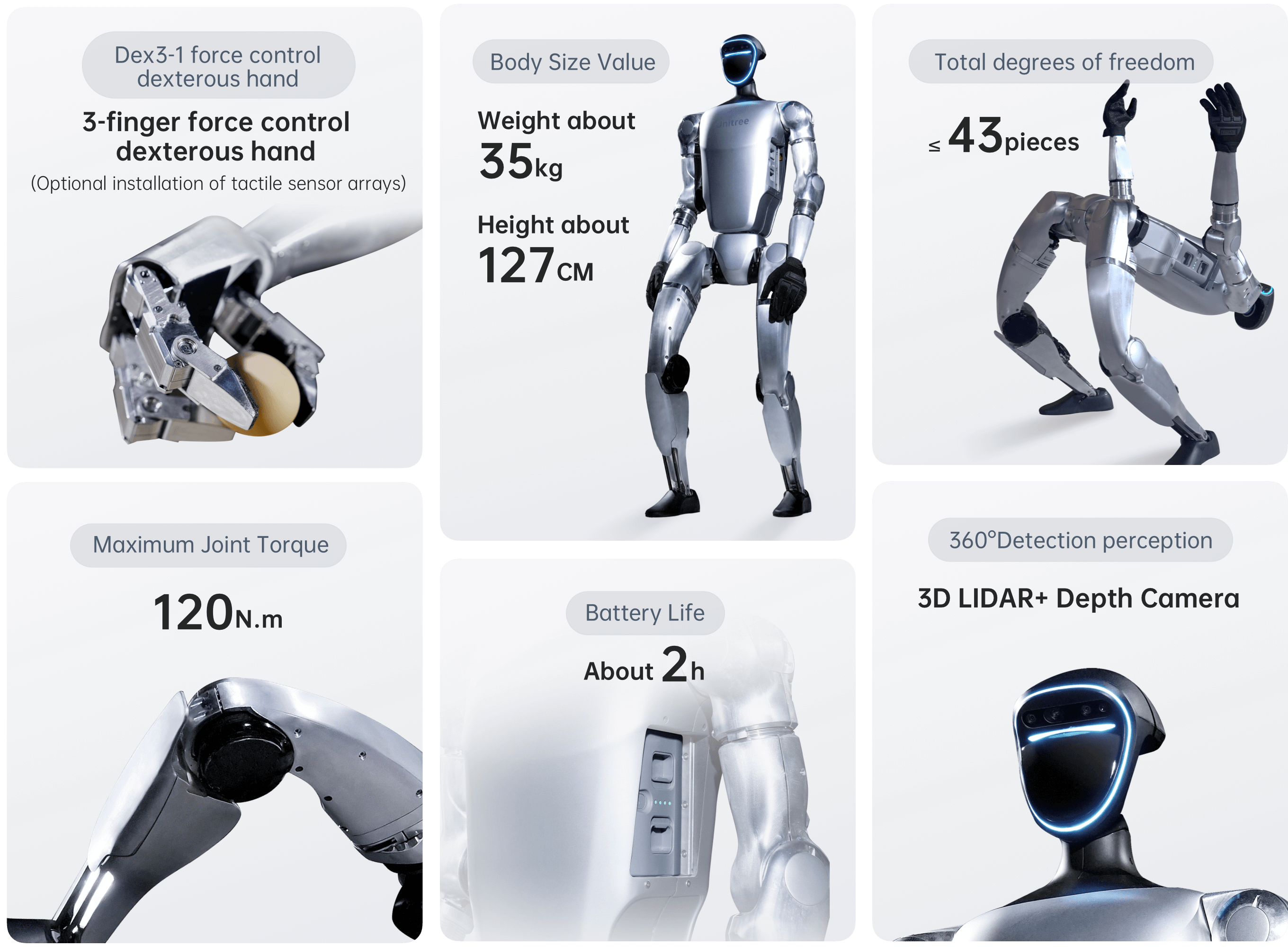
At the heart of the Unitree G1’s captivating capabilities lies a meticulously engineered set of specifications and features. Let’s delve into the technical details that make this humanoid robot a true marvel of modern engineering.
Mechanical Dimensions and Mobility
The Unitree G1 stands at a compact 4’2″ in height and can fold into a smaller package, measuring just 2’3″ in width, depth, and height. This compact design, weighing around 100 pounds, allows for enhanced maneuverability and ease of transportation. The robot’s impressive mobility is further showcased by its maximum walking speed of 4.5 miles per hour, rivaling a slow jog.
Joint Flexibility and Dexterity
One of the standout features of the Unitree G1 is its exceptional joint flexibility, with a total of 23 degrees of freedom. This hypermobility is evident in the robot’s ability to perform contortionist-like movements, such as standing up from a prone position and absorbing physical impacts. The robot’s single-leg degrees of freedom of 6, combined with the 5 degrees of freedom in each arm, enable a wide range of motion and precise manipulation capabilities.
Sensory Capabilities and Computing Power
The Unitree G1 is equipped with a depth camera and a 3D LiDAR sensor, providing it with advanced perception capabilities. This vision system, coupled with an 8-core high-performance CPU, allows the robot to navigate its environment and interact with objects with a high degree of accuracy and responsiveness.
Power and Autonomy
Powering the Unitree G1 is a 13-string lithium-ion battery, providing up to 2 hours of runtime on a single charge. The robot also features a local air cooling system to maintain optimal performance during extended use. Additionally, the G1 boasts Wi-Fi 6 and Bluetooth 5.2 connectivity, enabling seamless integration with various control and programming interfaces.
Unitree G1’s Potential Applications and Use Cases
The Unitree G1’s impressive capabilities and accessible pricing open up a wide range of potential applications and use cases, revolutionizing various industries and sectors.
Educational and Research Applications
The Unitree G1’s affordability and customization options make it an attractive choice for educational institutions and research laboratories. These humanoid robots can serve as platforms for teaching robotics, computer science, and engineering concepts, as well as enabling cutting-edge research in areas such as artificial intelligence, human-robot interaction, and advanced control systems.
Industrial and Inspection Tasks
The Unitree G1’s robust design and ability to navigate challenging environments make it well-suited for industrial and inspection applications. From performing maintenance checks in hazardous or hard-to-reach areas to assisting in manufacturing processes, these humanoid robots can enhance efficiency, safety, and productivity in various industrial settings.
Disaster Response and Emergency Situations
The Unitree G1’s mobility and resilience make it a valuable asset in disaster response and emergency situations. These robots can be deployed to navigate rubble, assess damage, and assist in search and rescue operations, reducing the risk to human responders and improving the overall effectiveness of emergency response efforts.
Household and Assistive Applications
While the Unitree G1’s small stature may limit its ability to perform certain household tasks, its dexterity and versatility open up the possibility of assisting individuals with limited mobility or performing specialized tasks in domestic settings. As the technology continues to evolve, the integration of humanoid robots into everyday life may become more seamless and beneficial.
Unitree G1’s Secondary Development and Customization Potential
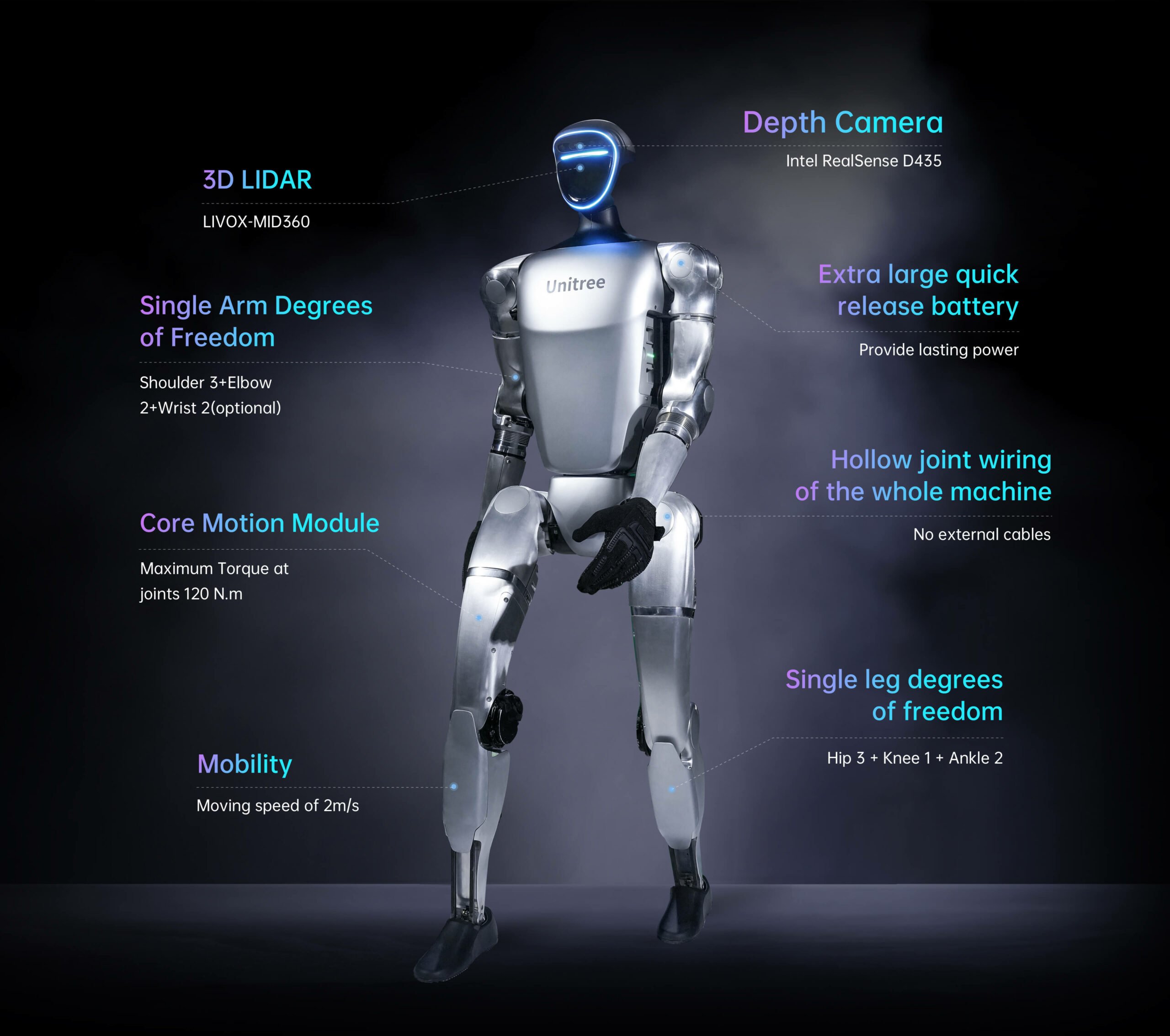
The Unitree G1 not only impresses with its out-of-the-box capabilities but also offers a wealth of opportunities for secondary development and customization, further expanding its versatility and potential applications.
Modular Hardware Upgrades
The Unitree G1 is designed with a modular hardware architecture, allowing users to upgrade and enhance various components, such as the computing power, sensor suite, and even the robotic hands. This flexibility enables tailored solutions for specific use cases, catering to the diverse needs of researchers, developers, and industry professionals.
Software Development and Programming
Unitree provides a software development kit (SDK) for the G1, empowering users to create custom applications and control algorithms. This open-source approach encourages a collaborative ecosystem, where developers can contribute their ideas and innovations, pushing the boundaries of what’s possible with the Unitree G1.
Simulation and Virtual Prototyping
To facilitate the development process, Unitree offers a comprehensive simulation environment, the Unitree Sim, which allows users to test and validate their software and hardware modifications in a virtual setting before deploying them on the physical robot. This virtual prototyping capability streamlines the development cycle and reduces the risk of costly mistakes.
Collaborative Ecosystem and Knowledge Sharing
Unitree’s commitment to fostering a collaborative environment extends beyond the technical aspects. The company encourages a vibrant community of Unitree G1 users, developers, and enthusiasts to share their experiences, insights, and solutions, creating a knowledge-sharing platform that accelerates innovation and problem-solving.
The Future of Humanoid Robotics: Implications and Considerations
As the Unitree G1 and other advanced humanoid robots continue to push the boundaries of what’s possible, it’s crucial to consider the broader implications and potential challenges that may arise.
Ethical Considerations and Regulatory Frameworks
The increasing capabilities of humanoid robots raise ethical concerns regarding autonomy, decision-making, and the potential for misuse. Establishing robust regulatory frameworks and ethical guidelines will be paramount to ensure the responsible development and deployment of these technologies, safeguarding both human and robotic wellbeing.
Human-Robot Interaction and Societal Acceptance
The integration of humanoid robots into our daily lives will inevitably impact the way we interact with and perceive these advanced machines. Addressing issues of trust, privacy, and the psychological impact of human-robot interactions will be crucial in fostering a harmonious coexistence between humans and their robotic counterparts.
Workforce Disruption and Reskilling Initiatives
The introduction of highly capable humanoid robots, such as the Unitree G1, may disrupt traditional job markets and workforce dynamics. Proactive measures, such as reskilling programs and the development of new job roles, will be necessary to help workers adapt to the changing landscape and harness the benefits of these technological advancements.
Sustainability and Environmental Considerations
As the demand for humanoid robots grows, it will be essential to address the environmental impact of their production, operation, and eventual disposal. Sustainable design practices, energy-efficient technologies, and responsible recycling and disposal methods must be prioritized to minimize the ecological footprint of these advanced machines.
Humanoid Robots: Unleashing Unprecedented Potential
The Unitree G1 and its counterparts represent a pivotal moment in the evolution of humanoid robotics. These remarkable machines are not merely toys or novelties, but rather harbingers of a future where robots can seamlessly integrate with and assist humans in a wide range of tasks.
Expanding the Boundaries of Robotics
The hypermobility and dexterity exhibited by the Unitree G1 challenge the traditional boundaries of what we consider possible in the realm of robotics. This newfound capability opens up a world of possibilities, from tackling complex manual labor to exploring hazardous environments, all while maintaining a high degree of safety and precision.
Implications for Industries and Society
The Unitree G1’s accessibility and customization options have the potential to revolutionize various industries, from education and healthcare to construction and disaster response. As these humanoid robots become more prevalent, we may witness a paradigm shift in how we approach tasks, collaborate with machines, and even perceive the role of robotics in our daily lives.
Ethical Considerations and Regulations
With the rapid advancements in humanoid robotics, it is crucial to address the ethical implications and establish appropriate regulations. Questions surrounding the autonomy, decision-making, and potential misuse of these advanced machines must be carefully considered to ensure the responsible and beneficial integration of humanoid robots into our society.
Conclusion: Embracing the Unitree G1 and the Future of Humanoid Robotics
The Unitree G1 stands as a remarkable testament to the rapid evolution of humanoid robotics. This captivating machine, with its exceptional mobility, dexterity, and accessibility, represents a significant stride towards a future where robots and humans coexist in unprecedented harmony.
As we witness the unveiling of the Unitree G1 and its competition with the renowned Boston Dynamics Atlas, we are confronted with a fascinating intersection of technological prowess, ethical considerations, and societal implications. The emergence of these advanced humanoid robots challenges us to redefine our perceptions of what’s possible, while also compelling us to thoughtfully address the complex issues that arise.
By embracing the Unitree G1 and the broader advancements in humanoid robotics, we have the opportunity to unlock new frontiers of innovation, revolutionize various industries, and enhance the quality of life for individuals and communities worldwide. However, this journey must be undertaken with a keen eye on the ethical, regulatory, and environmental concerns that accompany such transformative technologies.
As we stand on the cusp of this exciting new era, the Unitree G1 serves as a catalyst for us to collectively reimagine the future of robotics, fostering a collaborative and responsible approach that empowers both humans and machines to thrive in harmony. By navigating this landscape with foresight, innovation, and a commitment to the greater good, we can shape a tomorrow where the Unitree G1 and its successors become integral partners in our quest for progress and prosperity.
Definitions
- Unitree G1 Robot: A versatile humanoid robot developed by Unitree, known for its advanced mobility, dexterity, and compact design.
- Unitree: A Chinese robotics company specializing in the development of advanced humanoid and quadruped robots.
- Humanoid Robot: A robot designed to resemble and mimic the movements of a human, often used for tasks requiring human-like dexterity and interaction.
- Boston Dynamics Atlas: A humanoid robot developed by Boston Dynamics, known for its agility, strength, and advanced locomotion capabilities.
- 3D LiDAR: A sensor technology that uses laser light to create high-resolution 3D maps of the robot’s surroundings for navigation and obstacle detection.
- Unitree Sim: A simulation environment provided by Unitree for testing and developing software for their robots in a virtual setting.
Frequently Asked Questions
- What is the Unitree G1 robot? The Unitree G1 robot is an advanced humanoid robot developed by Unitree, featuring exceptional mobility and dexterity. It stands 4’2″ tall, weighs around 100 pounds, and can perform intricate tasks with precision.
- How does the Unitree G1 compare to Boston Dynamics Atlas? While both the Unitree G1 and Boston Dynamics Atlas are highly capable humanoid robots, the G1 emphasizes hypermobility with contortionist-like movements. Additionally, the G1 is more compact and affordable, starting at $16,000.
- What are the potential applications of the Unitree G1 robot? The Unitree G1 can be used in various fields, including education, industrial inspection, disaster response, and household assistance. Its versatility and affordability make it suitable for a wide range of tasks.
- What customization options are available for the Unitree G1 robot? The Unitree G1 offers modular hardware upgrades and a software development kit (SDK). Users can enhance computing power, sensor suites, and robotic hands, allowing for tailored solutions for specific needs.
- What is Unitree Sim, and how does it support the Unitree G1? Unitree Sim is a simulation environment that allows users to test and validate software and hardware modifications for the Unitree G1 in a virtual setting. This helps streamline the development process and reduces the risk of costly mistakes.


